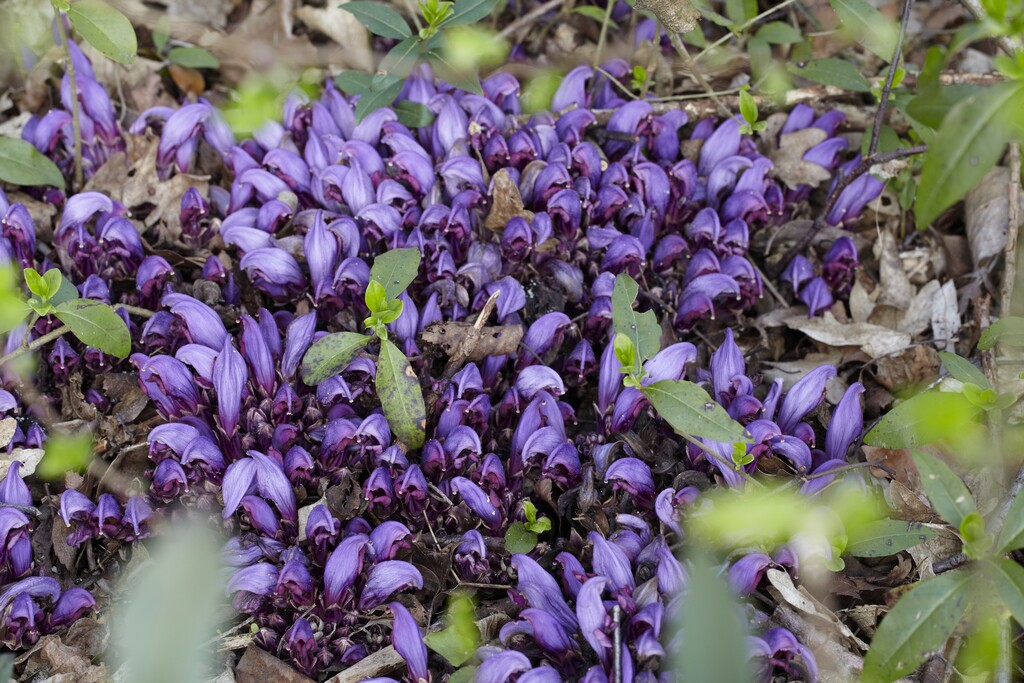Lathraea clandestina
hidden toothwort
Also known as Purple Toothwort, this is a leafless, harmless, parasitic plant, mainly feeding off hosts such as Willow, Poplar, Hazel and Alder but also ferns, herbs and other trees. For most of the year it is invisible, but from April to June, glossy, mainly dark, violet-purple, sometimes paler, crocus-like flowers appear. The seeds are ejected explosively allowing the plant to spread up to 8 metres. For further information, go to the RHS podcast at https://www.rhs.org.uk/plants/articles/wisley/wisley-plant-encounters/lathraea
Size
Ultimate height
Up to 10cmTime to ultimate height
2–5 yearsUltimate spread
4–8 metresGrowing conditions
Moisture
Moist but well–drainedpH
Acid, Alkaline, NeutralColour & scent
| Stem | Flower | Foliage | Fruit | |
| Spring | Purple White | |||
|---|---|---|---|---|
| Summer | ||||
| Autumn | ||||
| Winter |
Position
- Full shade
- Full sun
- Partial shade
Aspect
East–facing or North–facing or South–facing or West–facing
Exposure
Exposed or Sheltered Hardiness
H7Botanical details
- Family
- Orobanchaceae
- Native to GB / Ireland
- No
- Habit
- Matforming
- Name status
Correct
- Plant range
- W Europe
How to grow
Cultivation
Dig a wide hole next to the base of the host tree/plant (preferable Willow, Hazel, Alder or Poplar) and make a wound in the base of the host stem or trunk. Press the Lathraea next to this. Cover with soil, firm in and keep watered. It may take two seasons before there is any sign of growth, and due to the wide spread of the roots, the flowers may come up some distance from where they were planted
Propagation
Propagate by seed or root
Suggested planting locations and garden types
- Cottage and informal garden
- Ground cover
Pruning
No pruning required
Pests
Generally pest-free
Diseases
Generally disease-free
Get involved
The Royal Horticultural Society is the UK’s leading gardening charity. We aim to enrich everyone’s life through plants, and make the UK a greener and more beautiful place.
